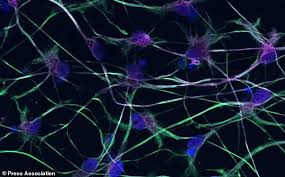
Breaking News
 Russiagate Opens the Door to Covid
Russiagate Opens the Door to Covid
 BrightLearn - RFK Jr.'s Impact on American Health Policy, an interview with Del Bigtree
BrightLearn - RFK Jr.'s Impact on American Health Policy, an interview with Del Bigtree
 Eric And Donald Trump Jr. To Help Launch New U.S. Manufacturing SPAC
Eric And Donald Trump Jr. To Help Launch New U.S. Manufacturing SPAC
Top Tech News
 'Robot skin' beats human reflexes, transforms grip with fabric-powered touch
'Robot skin' beats human reflexes, transforms grip with fabric-powered touch
 World's first nuclear fusion plant being built in US to power Microsoft data centers
World's first nuclear fusion plant being built in US to power Microsoft data centers
 The mitochondria are more than just the "powerhouse of the cell" – they initiate immune...
The mitochondria are more than just the "powerhouse of the cell" – they initiate immune...
 Historic Aviation Engine Advance to Unlock Hypersonic Mach 10 Planes
Historic Aviation Engine Advance to Unlock Hypersonic Mach 10 Planes
 OpenAI CEO Sam Altman Pitches Eyeball-Scanning World ID to Bankers
OpenAI CEO Sam Altman Pitches Eyeball-Scanning World ID to Bankers
 New 3D-printed titanium alloy is stronger and cheaper than ever before
New 3D-printed titanium alloy is stronger and cheaper than ever before
 What is Unitree's new $6,000 humanoid robot good for?
What is Unitree's new $6,000 humanoid robot good for?
 "No CGI, No AI, Pure Engineering": Watch Raw Footage Of 'Star Wars'-Style Speeder
"No CGI, No AI, Pure Engineering": Watch Raw Footage Of 'Star Wars'-Style Speeder
 NASA's X-59 'quiet' supersonic jet rolls out for its 1st test drive (video)
NASA's X-59 'quiet' supersonic jet rolls out for its 1st test drive (video)
 Hypersonic SABRE engine reignited in Invictus Mach 5 spaceplane
Hypersonic SABRE engine reignited in Invictus Mach 5 spaceplane
Motor neurone disease breakthrough as scientists identify cells thought to cause the cruel...

A cure for motor neurone disease – which killed Professor Stephen Hawking – has moved one step closer, scientists believe.
The cruel condition causes signals from motor neurone nerve cells in the brain and spinal cord to fail.
Motor neurones control crucial muscle activity and if they are damaged and break down some patients eventually find it impossible to walk or even speak.
Now researchers have found that another type of brain cell – thought to be harmless – could play a role in the disease, which is also known as ALS (amyotrophic lateral sclerosis).
Tests of cells from skin samples of patients with MND, also known as ALS, showed glial cells can damage motor neurones.
University of St Andrews researchers said glial cells normally support neurones in the brain and spinal cord.

 Dead? Or Just 'Mostly' Dead?
Dead? Or Just 'Mostly' Dead?

